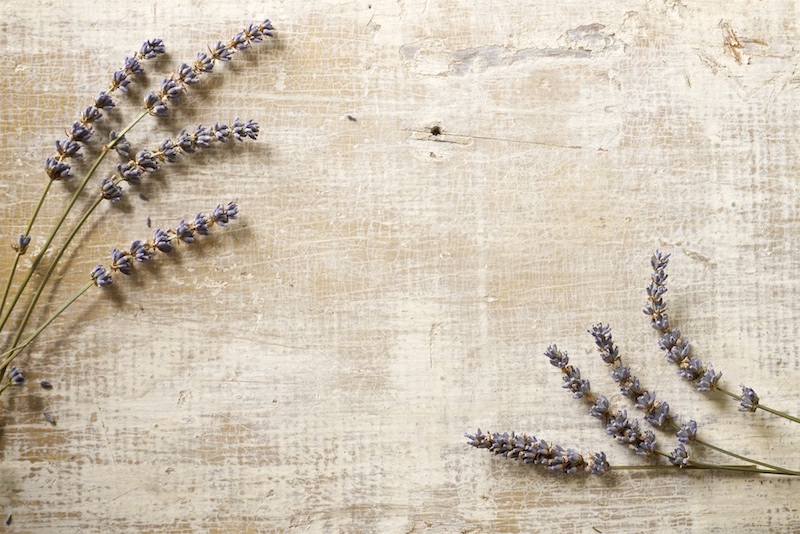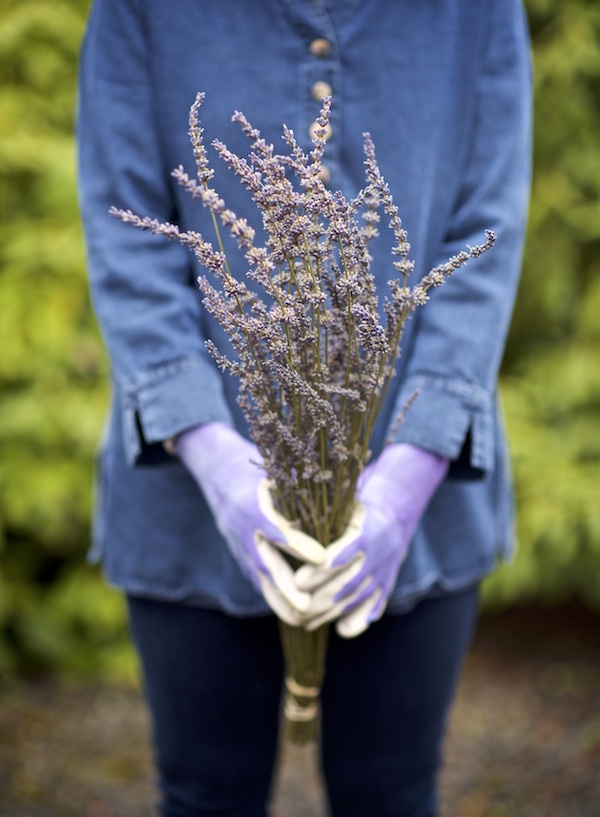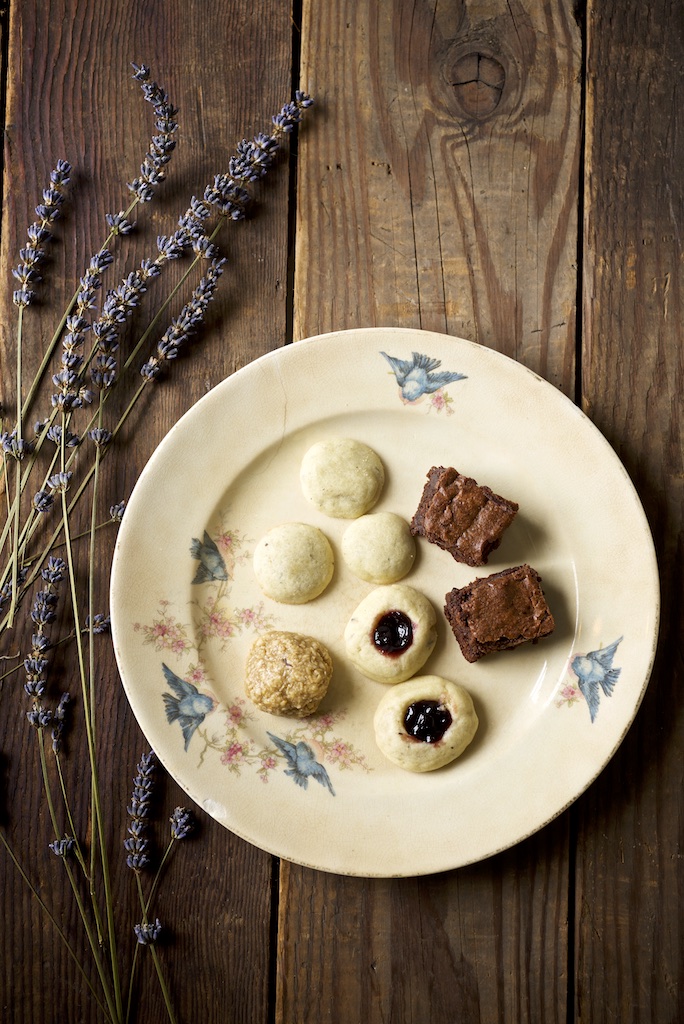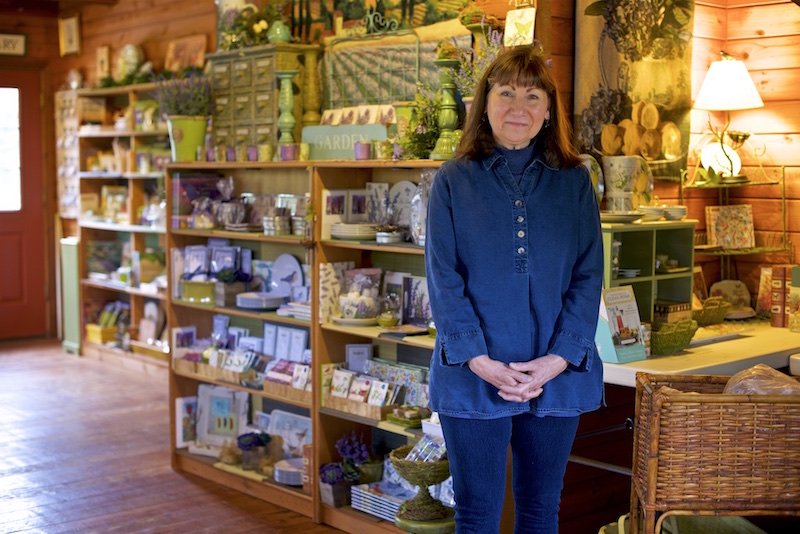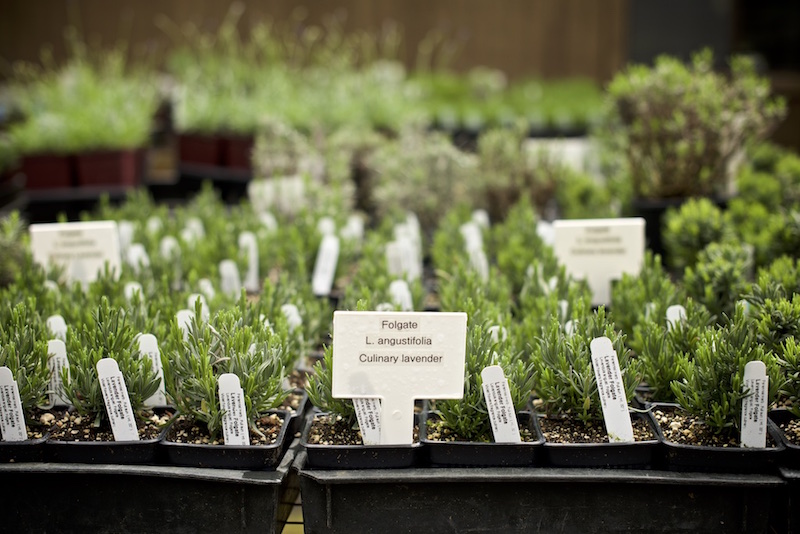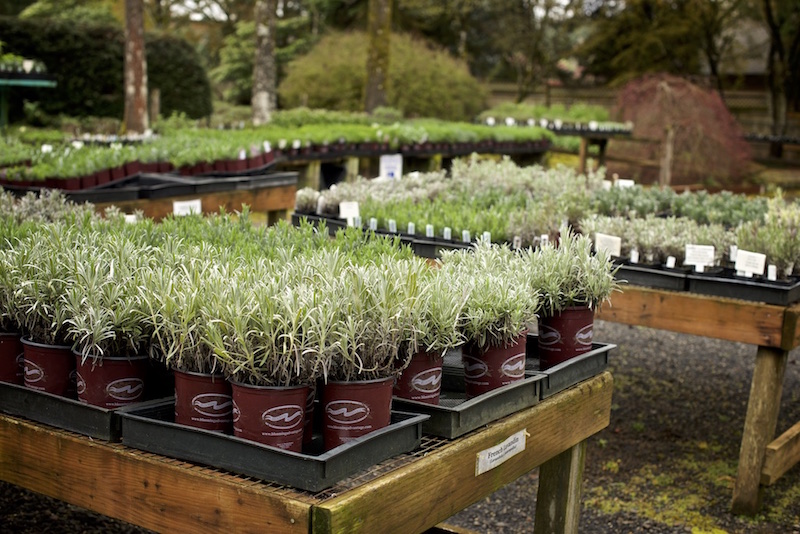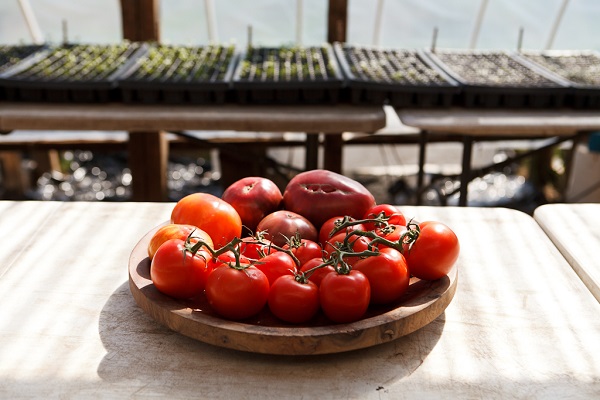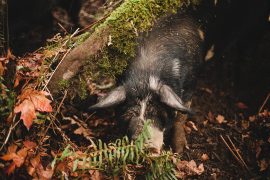Give dishes a boost with some lavender love from Barn Owl Nursery
written by Sophia McDonald | photography by David L. Reamer
Walking through a lavender field in summer provides a glimpse of the sublime. The sun warms the air and amplifies the perfume of the fragrant purple blossoms rustling in the wind. Bees buzz through the honeyed light, so focused on their harvest that they ignore passersby. A quick rub of the rough leaves or petals puts the pleasantly astringent scent on your fingertips once it’s time to say goodbye.
Lavender flowers are typically harvested for their oil, which has scented soaps and creams for centuries. Blossoms from certain varieties can also lend a lovely floral taste to sweets, savory items and beverages. Christine Mulder, owner of Barn Owl Nursery in Wilsonville, has long been a supplier of edible lavender and other culinary herbs. She grew up in the nursery business and remembers her father cultivating lavender. “But there were very few lavenders to choose from that were being propagated in the United States at that point,” she said. “ The four cultivars I grew originally were for landscaping.”
Her father was in business before Oregon’s commercial lavender industry blossomed approximately thirty years ago. As wineries growing French grapes started to take off, people realized other traditionally French crops might grow just as well in the Willamette Valley’s Mediterranean climate. Lavender is fairly hardy and can tolerate cold and wet winters. It loves hot, dry conditions when it’s ready to bloom.
In order for an industry to exist, growers needed access to a range of plants that are well-adapted to Oregon. That’s where nurseries like Mulder’s came in. Mulder now sells more than 100 lavender cultivars. Among them are Hidcote and Munstead, two of the best for cooking. Both are English lavender, which is the only variety used in food. In order for an industry to exist, growers needed access to a range of plants that are well-adapted to Oregon. at’s where nurseries like Mulder’s came in. Mulder now sells more than 100 lavender cultivars. Among them are Hidcote and Munstead, two of the best for cooking. Both are English lavender, which is the only variety used in food.
“Now I see it offered in kombucha and in different teas. Distillers are using it too,” Mulder said. Aviation American Gin is one example. At Portland’s Symposium Coffee, a latte sprinkled with lavender sugar is one of the most popular drinks. Mulder enjoys serving her own lavender goodies when people visit her nursery. On special occasions she makes lavender lemonade or Arnold Palmers with her house-blended lavender peach green tea, and serves them with lavender cookies.
Homeowners who like the look and taste of lavender can easily grow and harvest their own. The plants are best placed in the ground in fall or spring. Come summer, harvest the owers in the bud stage. “ That’s when the oil content is the highest for culinary purposes,” Mulder said. “ Then you have to dry them quickly to lock that oil into the owers. Store them whole so you’re not breaking them up and releasing that essential oil until you’re ready to make the recipe.” The Willamette Valley is also an outstanding place to grow other culinary herbs. Mulder carries more than fifty kinds, from commonplace items like sage, rosemary and thyme to more exotic varieties such as feverfew, valerian and sorrel. Delicious as it may be, lavender, in rows at the peak of perfection, is an awesome sight.
Oregon and Washington are leading the way when it comes to commercial lavender cultivation in the United States. That said, the industry is quite small. There are only twenty to thirty farms with sizeable lavender planting in Oregon. “A lot of our members are hobby growers,” said Dr. Michael Lemmers, treasurer of the Oregon Lavender Association, who noted that most people are growing on small farms. Most send their flowers to distillers who extract the essential oil. Luckily there are a few farms providing edible lavender to restaurants and bakeries all over the state. Taproot Lounge and Café in Salem uses the herb for a lavender blueberry Collins. Owner Christopher Holland recommends garnishing it with a blueberry and lemon slice speared on lavender sprig. “Dress up your garnish by crushing dried lavender into a fine dust and mixing it with decorating sugar, then dipping your lemon in the sugar,” he said.
Also on the sweeter side are lavender poppy seed cookies from Red Star Tavern in Portland. Pastry chef Stacey Needham likes to serve them with vanilla crème brûlée, but they’re also delicious on their own. If lavender isn’t your thing, try another one of Oregon’s culinary herbs. Sorrel adds tartness to a green garlic vinaigrette that’s delicious served over roasted carrots. The recipe comes courtesy of chef Katy Millard with Portland’s Coquine.



